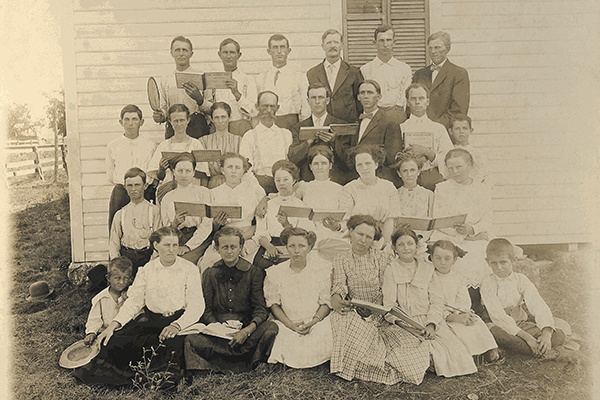
photo: courtesy texas sacred harp historical interest.
Sacred Harp Group Photo. Oglesby, Texas, circa 1915.
You knew Chicago was a sanctuary for blues and gospel, but you’ve probably never heard of this rural-born musical tradition—even though it was probably America’s first ever.
Sacred Harp music was a church-based form of communal singing that almost completely died out. Then, late in the 20th century, it experienced a revival. That was due, in part, to Chicago’s growing community of (often secular) Sacred Harp enthusiasts.
This Saturday and Sunday will bring the 28th Annual Midwest Convention of Sacred Harp back to the city in full a cappella force. And you can go for free!
You might have heard Sacred Harp already. Remember the scene in Cold Mountain when Jude Law and Nicole Kidman are sitting in church, singing in Sacred Harp style with with over-emphasized vowels, chopping their hands in the air to keep time? It’s no coincidence that the film included Jack White—one of the strongest revivalist musicians in the mainstream today. He is part of a huge trend in indie music that idolizes these native genres, aspiring to their simple, unpretentious stamp.
As for what it sounds like, a decent sized group can be heard for half a mile. But Sacred Harp singing was not intended for big cities, fancy auditoriums, or even audiences. The four choral sections sit facing each other with a square of space in the middle for the music leader. A selection of songs are chosen from the 1844 book The Sacred Harp, which gave the tradition its modern name.
There was a 2006 documentary about Sacred Harp singing called Awake, My Soul with an original soundtrack of reinterpreted songs by John Paul Jones of Led Zeppelin, Doc Watson, Elvis Perkins, Rick Moody (author of Garden State and The Ice Storm), and others. These cultural icons are helping refresh Sacred Harp, which is also called "shape note singing" due to a simplified form of notation that uses shapes to help singers follow their choral parts. More precise musical notations eventually won out, leaving only the hymnal singing you would see in Protestant churches today, but the powerful experience and democratic nature of Sacred Harp singing led to the current revival.
The formerly-dying music tradition now has hundreds-deep choirs sing at the Annual Midwest Convention, and numbers are growing. The spotlight always loves an underdog.
May 25 at the Pulaski Park Fieldhouse, 1419 W. Blackhawk St., May 26 at the Irish American Heritage Center, 4626 N. Knox Ave., shape-note.uchicago.edu; Free


